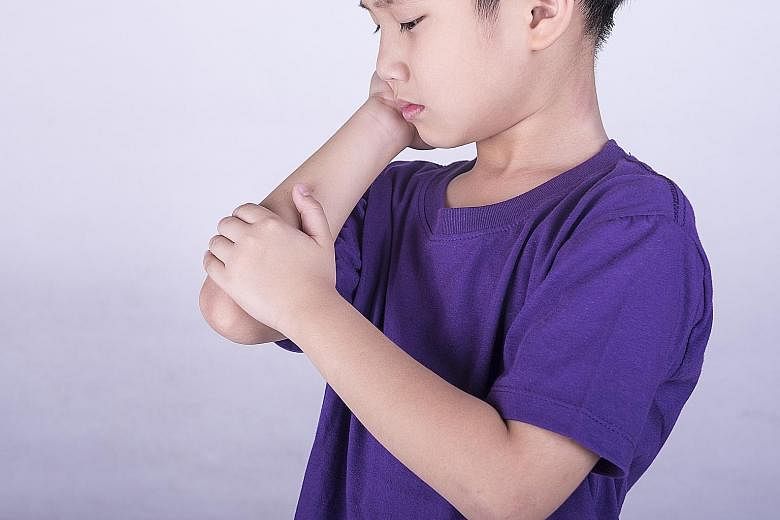Polytechnic student Shandy Ng, 17, has had a swelling in her left foot for a few years now.
She had also complained of a slight pain and tightness in her foot and had been walking with a slight limp for three to four years before that, said her father, Mr Ng Boon Khee.
These are the symptoms of juvenile idiopathic arthritis (JIA), a chronic disease that causes inflammation of the joints in children.
Associate Professor Thaschawee Arkachaisri, senior consultant and head of rheumatology and immu- nology service at the KK Women's and Children's Hospital's (KKH) department of paediatric sub- specialities, diagnosed Shandy with JIA last year, after she was referred to the hospital for a scan to check a bone growth issue. Before that, her father had taken her to a few doctors, all of whom could not pinpoint the problem.
"She did ballet and dance when she was younger. We thought it was the ballet training and dancing that caused the problem," said Mr Ng.
He took her for physiotherapy. Seeing no improvement after nearly a year, the physiotherapist referred her to KKH.
Dr Ooi Pei Ling, an associate consultant at the division of paediatric allergy, immunology and rheumatology, National University Hospital, said: "Children with JIA experience joint pain, stiffness and swelling that last for six weeks or more.
"This inflammation can occur in any joint in the body, including the limbs, back and even the jaw."
A small proportion of children with JIA also develop eye inflammation, which may cause vision loss if left untreated, she said.
Early treatment is key. Doctors will try to stop the inflammation of the joints as fast as they can, to minimise the risk of joint damage.
The longer the joint is left inflamed, the higher the risk of joint damage, said Prof Thaschawee. He highlighted four signs of arthritis:
•Joint or limb pain: The child will not allow anyone to touch the affected joint or limb because it is painful. Parents often dismiss joint pains as growing pains. But with growing pains, kids do not limp and do not avoid using their limbs. Unlike joint pains, growing pains occur only at night.
•Refusal to walk: The child will refuse to walk or use the affected joint or limb. He will not be as active as before due to the pain or stiffness.
•Joint swelling: Parents should check for swollen fingers or knees, as younger children may not complain about the pain.
•Morning stiffness: This lasts longer than an hour when the child gets up in the morning. With arthritis, if you do not move, you will get stiffer. The child would be experiencing this daily and not just on one morning.


